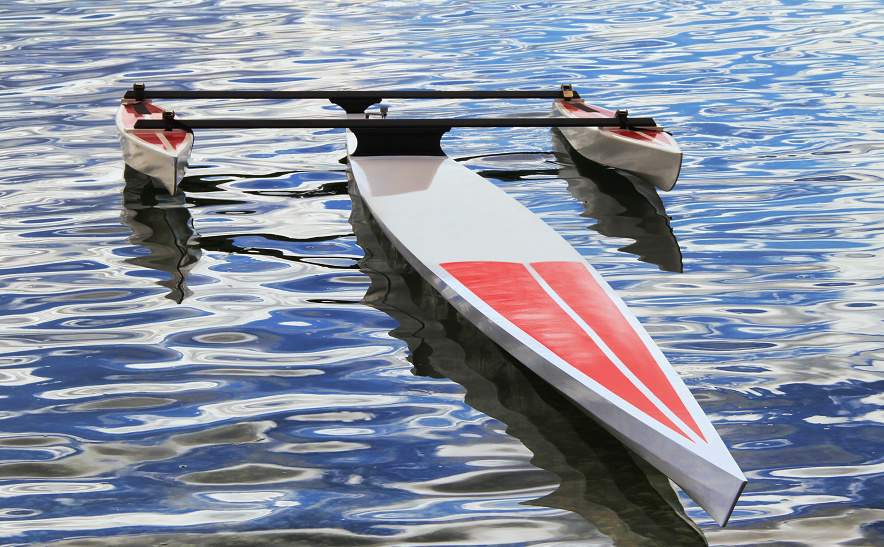Thanks in advance for any answers/advice. I’m a newby to whole field of electronic boat control, so please bear with me if my questions reflect this. We are developing a solar electric autonomous boat to cross the Atlantic Ocean, and I am hoping to use Rover Ardupilot for navigation. It’s a larger 24’ boat (please see the pic of the prototype boat below). I’ve spent quite a bit of time reading through the forums and manuals/articles, but still have some questions.
-
Method for Navigating to Waypoints: Does Arupilot boat steer along a track, or does it simply point to the waypoint regardless of sideslip. All off-the-shelf autopilots (for larger crewed boats) follow a track, although this is not necessarily the best way to go. In our situation, the vectors at play will (winds currents) will roughly cancel each other out over the long run, so it is better that the boat simply steers straight at the distant waypoint, sometimes drifting south, sometimes north relative to the track line, rather than continually fighting these vectors. A good example that illustrates this concept is a row I once did across the English Channel - during the course of our row from one side to the other, the tide flooded and then ebbed. These two vectors cancelled each other out over the time of our crossing. Had we compensated to do a straight line across, our overall speed would have been slower than the route we did, where we held a relatively constant heading , and our overall track looked like a parenthesis . The biggest issue with steering a track with an autonomous boat, is if the boat is inactive for hours at a time due to limited power supply, the boat may drift far from its track. When it’s back in motion, it would be better off heading for a distant waypoint, rather than continually struggling to get back to its track.
-
Corrective Action: In big waves, it is beneficial to vary the reaction of the rudder depending on what is required. The off-the-shelf models of crewed boat autopilots usually have two rudder responses depending on how much the boat deviates from course. For example, if a big wave hits the boat and throws it thirty degrees off heading, greater corrective rudder movement is initiated than if the boat moves three degrees off course. Does the Rover autopilot have a feature like this?
-
Potential Problems? We’ve pondered using a small off-the-shelf tiller pilot for our boat, hooked up to a basic autopilot, but there are a number of reasons why this doesn’t work well. The units are programmed so that a button needs to be manually pushed before the boat will proceed to the next waypoint. This is a bit of a showstopper for an unmanned boat. Additionally, if the power supply is interrupted (for our boat, a couple of foggy days could create this situation) the whole system needs to be manually restarted, before it will resume operating. There is the potential of creating parallel relay switches at the tiller pilot buttons controlled by an Arduino to sequentially provide the required inputs, however, it seems more elegant to simply operate the Rover autopilot system. Are there any problems anyone can envision that could arise from using an Ardupilot in a long-term unmanned environment? For example, if the power supply is interrupted will the system resume operations once the power returns, or does it require manual intervention? Or perhaps a small bug in the system causing it to crash?
-
I’m still a little unclear (and again, excuse my ignorance in this realm) as to how to integrate the Rover autopilot into the system we will be using for our boat. Since the boat is bigger (about 300 lbs and 24 feet long), it won’t be possible to use the smaller rc linear actuator servos for the rudder. Instead, we will be using a larger 12 volt actuator (here’s a model that we might be using; www.firgelliauto.com/products/os-series) Since the PixHawk outputs at 5.7 volts, or so, I’m assuming the way to control the rudder actuator is to use a relay board, with 12 volts coming from another power source. I’m also a little unsure how the position sensor of the actuator is wired in back to the main board. If anyone has any advice on the specifics of what would be the ideal way of connecting/wiring the Pixhawk to the steering system would be much appreciated.
Anyway, that’s it for now. I look forward to hearing some thoughts.

